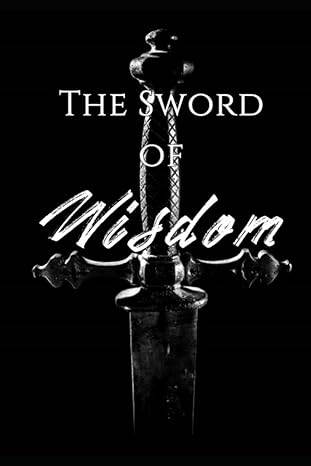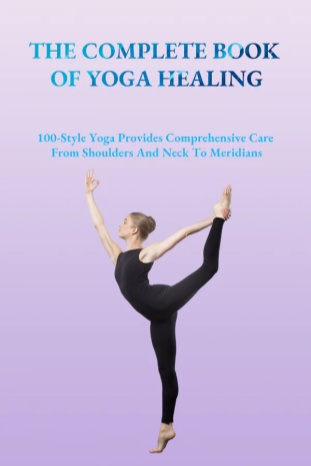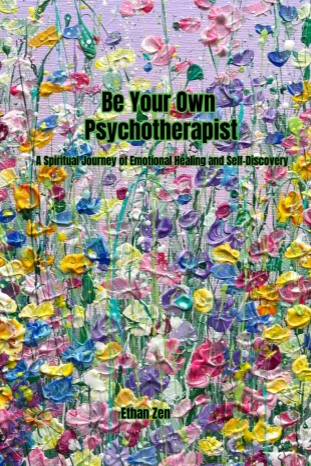The Sword of Wisdom: A Guide to Enlightenment Through Chan Meditation
Discover the transformative power of Chan (Zen) meditation with The Sword of Wisdom. In this enlightening guide, Chan Master Sheng-Yen provides practical techniques and profound insights to help readers achieve clarity, mindfulness, and spiritual awakening. I Want to Buy It
Inside this book, you will find:
- Detailed instructions for Chan meditation practices.
- Insights into overcoming inner obstacles and achieving mental clarity.
- Commentary on ancient texts, including the Song of Enlightenment.
- Practical advice for integrating mindfulness into daily life.
Whether you are new to meditation or an experienced practitioner, The Sword of Wisdom will guide you toward enlightenment, offering tools to navigate the path of practice with compassion and resolve. Embrace the journey to uncover your true nature and wield the sword of wisdom to illuminate your life. I Want to Buy It
The Sword of Wisdom: A Guide to Enlightenment Through Chan Meditation
The Song of Enlightenment
In the Song of Enlightenment, one theme stands out:
Real nature is the nature of emptiness. It is the original nature of all dharmas. Hence it is also called Dharma nature. All dharmas, both external and internal, arise because of causes and conditions. In and of themselves, dharmas have no intrinsic reality. It is also called Buddha-nature.
In the course of the text, Yung-chia stresses the importance of maintaining an attitude of neither grasping nor rejecting. He also stresses that, although it is important that one know and understand the teachings of the sutras, one should not rely solely on the written word. A practitioner must devote himself to practice.
The Song of Enlightenment tells us how to practice, how to live our lives, and how to view the world. It tells us how we can help ourselves on the Buddhist path, and how we can help others after entering the door of Ch’an. I Want to Buy It
The Buddha nature always exists
If there were no enduring existence, there would be no point in practicing. What exists is our original and fundamentally pure Buddha-nature. Originally and always, there is Buddha-nature, just as there is a sky. Whereas our bodies and minds come and go like clouds, Buddha-nature, or self-nature, always exists, just as the sky exists whether or not clouds appear.
Buddha-nature cannot be created by practice. It has always been present. If Buddha-nature were something that could be created, then it could also be destroyed. Then why practice if one already possesses Buddha-nature? Practice does not create a Buddha. Practice helps us to realize or reveal Buddha-nature, which has always been there. If someone asks, “Where or what is the Buddha?”, answer with a question: “Where or what isn’t the Buddha?” I Want to Buy It
Take all of your thoughts
Take all of your thoughts ─ good, bad, indifferent ─ and drop them. If you can do this, you will be enlightened instantly. If you can reach the state of mind where there is no self, no other, no discrimination, no sentient beings, no Buddha, then you will realize the true reality of things. Take the sword of practice and cut open the mind of discrimination. When enlightenment cuts through the discriminating mind, it leaves nothing behind, because from the beginning there has never been any real self to divide.
Forget about time while you practice. Do not think, “I don’t have enough time to experience anything.” Do not think, “I’m young, there’s plenty of time to practice.” During retreat, the best attitude is to make full use of every instant, from beginning to end, grasping hold of the moment and practicing hard. Do not think about the past or future. Stay in the present moment. I Want to Buy It
Cultivation is about Removing Mental Afflictions
If you are in a dark room and a few rays of sun stream through a window, it is possible to see dust motes floating in the air. When the room is dark, however, the dust is invisible, and you might assume the air is pure. Before we practice, we live in a dark room. As we practice, we become aware of vexation by the light of self-awareness.
Before enlightenment, our mind is a mirror covered with the dust of vexation. People who do not practice may not be aware of this, and they may wallow in despair and helplessness, blaming their misfortune on other things. But those who practice and perceive their vexations and confusion are more aware of their condition, and how they may correct it. For this reason, you should not be upset by your dirty mirror. If it were not for the mirror, you would not be aware of the dust.Practice is like wiping dust off the mirror. I Want to Buy It
Sheng-Yen Shi
Master Sheng-Yen (1930–2009) was a renowned Taiwanese Zen master, teacher, and scholar whose teachings have had a profound influence on the global spread of Zen Buddhism. A disciple of the late Master Dongchu, Sheng-Yen was recognized for his deep understanding of Buddhist philosophy and his practical approach to meditation.
He spent much of his life helping others cultivate wisdom and compassion through the practice of Chan (Zen) meditation. With a unique ability to blend traditional Buddhist teachings with contemporary insights, Master Sheng-Yen authored numerous books and led retreats that emphasized the transformative power of meditation, mindfulness, and self-awareness. I Want to Buy It
Student Testimonials for Venerable Master Sheng Yen
Master Sheng-yen (his students call him Shih-fu, which is Chinese for “teacher-father”) has been teaching in the United States since 1976. In that time, he has led students in over fifty intensive meditation retreats, and has given hundreds of lectures at the Ch’an Meditation Center and other places throughout North America and England. He has given even more retreats and lectures in Taiwan. His words have been of enormous help to most people who have listened, and for some, myself included, his guidance has been of life-changing significance.
Master Sheng-yen’s extensive understanding of Buddhadharma is evident in his lucid Dharma talks. These lectures on the Song of Enlightenment, an ancient Ch’an (Zen) Buddhist classic written by Yung-chia Hsuan-chueh during the T’ang dynasty, were delivered during the evenings of intensive, seven day retreats. Retreat lectures are spontaneous, improvised talks. The lectures are commentaries on Buddhist texts, but more importantly, they contain a wealth of relevant information and practical advice for practitioners on the retreat. The text serves as a jumping-off point for Master Sheng-yen, who interprets Buddhadharma and tailor fits it to guide each participant in the proper use of his or her meditation method, and to help each participant overcome obstacles on the path of practice. The lectures, therefore, take on many guises, depending on the nature, situation and needs of the audience. The mood, momentum and direction of the lectures change from day to day, retreat to retreat. Still, this is a book for practitioners and non practitioners alike. In the process of helping retreat participants with problems they face in their practice, Master Sheng-yen does, in fact, offer a rich commentary on the Song of Enlightenment; and in so doing, he clearly and eloquently expounds the principles of Buddhism. I Want to Buy It
The express aim of these talks, however, is to help people solve problems and overcome obstacles encountered in their practice. During lectures, it is a familiar sight to see students nodding their heads in silence as he speaks, as if questions in their minds had been answered without being asked. In the group discussion at the end of the retreat and in reports people are asked to write after the retreat is over, many participants say that they felt as if Master Sheng-yen were speaking directly to them at certain moments during the lectures.
His lectures are filled with advice for practice and daily life, questions to ponder, answers to theoretical and personal questions, anecdotes from his life, as well as stories and legends from Buddhist history and scripture. His tone can be commanding, understanding, cajoling, amusing, scolding, humbling or sympathetic. For many, his words and knowledge are precious jewels of wisdom and compassion.
The lectures differ, depending on the participants. Master Sheng-yen’s “medicine” fits the individual and the occasion. At certain times, his words may seem to contradict the words he spoke earlier. From a higher perspective, however, there are no contradictions. The path of Ch’an is long, and there are many levels of understanding. What holds for one stage of practice may not necessarily hold for another. What holds for someone one day may not necessarily be true for the same person the next day. As Master Sheng-yen addresses the problems of each individual, he blends his answers seamlessly into the commentary, and the thrust of his talk will change to meet every individual’s situation. What is abstract theory for one participant may be concrete instruction for another.
Master Sheng-yen once likened his retreat lectures to balls which he throws out to his listeners. To him, all the balls are the same because they all emanate directly from Buddhadharma, but to us they vary. Many we miss altogether; they are invisible. Sometimes a ball is like a flash of light which goes by too quickly to grasp. At other times we grasp a small truth, but cannot hold onto it. Finally, there are balls which hit squarely in the chest and stay put. These are the teachings which are understood and put to use. Some teachings seem out of reach; good ideas to think about, but not to incorporate into practice or life. Other teachings appear like the sublime teachings of Bodhisattvas-esoteric philosophy too amazing to be true. Yet, they are all important. Something you miss may strike the person sitting next to you, even though he or she may appear to be nodding off. I Want to Buy It
Editorial Reviews
Yung-chia Hsuan-chueh lived during the T’ang dynasty (618-907). He was born in 665 and died in 713 at the age of 48. His given name comes from the town he was born in ─ Yung-chia ─ which is located in present-day Che-kiang province. His Dharma name was Ming-tao, Ming meaning “bright” and Tao, “path.”
He left home to join the monkhood at an early age, but he spent most of his life near Yung-chia. He studied with several masters, including the Fourth Patriarch of the T’ien-tai school. He was also good friends with Hsuan-lang, a master who later became the Fifth Patriarch of the T’ien-tai school. Eventually, he settled at Lung-hsing temple in Wen-chou, Che-kiang, where he built a small cottage for his practice.
By the time he reached forty years of age, Yung-chia had become quite well known, and many practitioners sought his teachings. One monk, Hsuan-ts’e, who was a disciple of the Sixth Patriarch, Hui-neng, visited Yung-chia at Lung-hsing temple. Hsuan-ts’e was amazed that Yung-chia’s insight was mon par with that of enlightened masters, even though Yung-chia had not been recognized as a master.
Hsuan-ts’e asked Yung-chia where and how he had gained such deep insight. Yung-chia replied, “When I studied sutras and sastras, individual masters taught me specific things. Later, when I penetrated the essence of Buddha’s mind through the Vimalakirti Sutra.
Many practitioners studied with Yung-chia in his remaining years, and his fame grew. He was so highly respected, that upon his death in 713, the Emperor of China bestowed upon him the posthumous title, Wu-hsiang, which means “without phenomenon.”
He stressed that one who is serious about the Dharma should not have too much pride or desire. One must strive to maintain purity in thought, words and action, which will help to purify one’s personal karma. To do this, a practitioner must abide by the precepts. Yung-chia believed that without precepts, a practitioner could not truly study Buddhadharma or practice samatha (calming the mind) and vipassana (insight). However, with proper behavior and practice, a Dharma seeker can enter samadhi, and eventually generate wisdom. Wisdom will arise only when, as the Vimalakirti Sutra states, principles (noumena) and phenomena are not separate.
Yung-chia also emphasized the importance of making vows. Without sincere vows, a practitioner will progress slowly and accomplish little. Buddhas and Bodhisattvas attained their positions because they all made such great vows as the Four Bodhisattva Vows.
The Song of Enlightenment is priceless because it speaks of daily life activities, proper methods of practice, and proper attitudes while practicing, both before and after enlightenment. In fact, Sung dynasty Master Ta-hui Tsung-kao reported that the Song of Enlightenment was so esteemed by Buddhist practitioners that it was translated into Sanskrit. Whether it is true or not, it says something for the reputation of the song.
In the Song of Enlightenment, one theme stands out: reality is defined by two sets of terms: real nature, or Dharma nature; and self-nature, or Buddha-nature. I Want to Buy It













